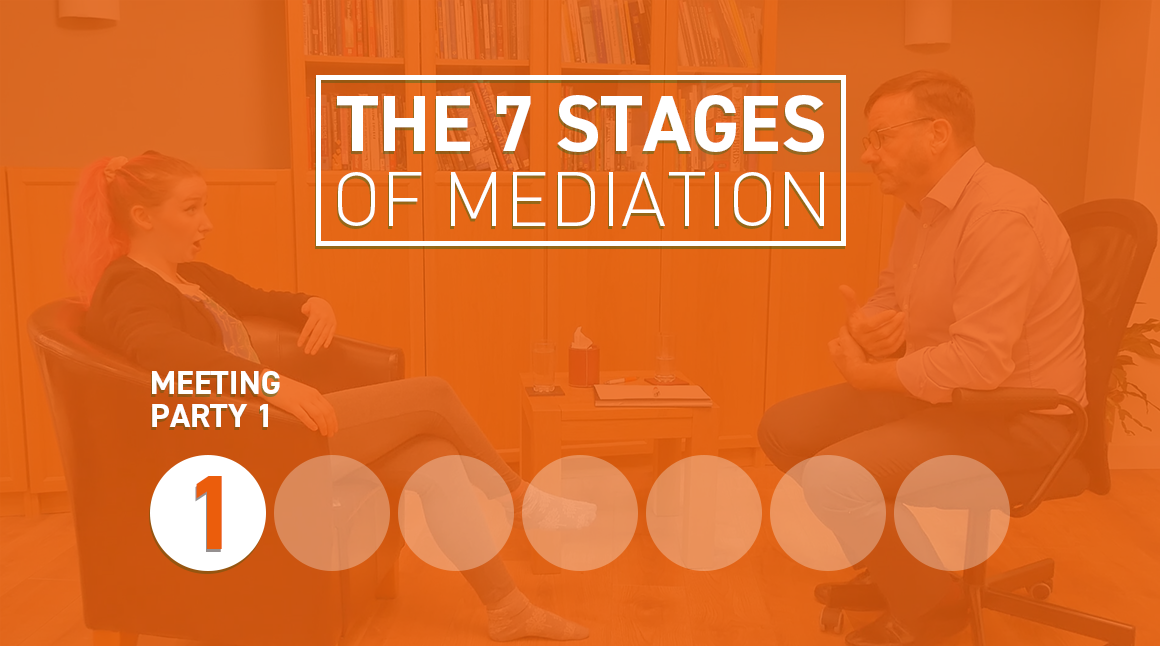
Posted on: June 9th, 2025

Developed over the last 26 years, UK Mediation has refined and honed our own 7-Stage Mediation Model for interpersonal disputes. Based on Dr Mike Talbot’s pioneering work, as well as experience gained from mediating thousands of cases, the 7 stages cover the entirety of a typical mediation day. This includes the individual meetings with each party, the joint mediation session, and finally the forming of the written agreement.
In this series of articles, we will outline each of these seven stages. We start with Stage One in this article.
Depending on the number of parties involved, Stage One typically lasts for around 1-1½ hours and is held on the morning of the mediation day. It involves introductions (both of the process and of ourselves as the mediator), finding out about the situation from the perspective of the first party, and seeking agreement from them to continue with mediation.
People coming into mediation for the first time will be understandably anxious and will need plenty of reassurance from us in order to take part. They will also need plenty of information about what is going to happen on during the mediation process.
Our role as the mediator is to begin building rapport with the parties, to be clear about our involvement, and to set clear boundaries for the process.
How this is all delivered is important as well: the language and tone should be natural and genuine, and pitched at the right level for the service users. Most importantly, the introduction will be shaped by the mediator's own style, who they are mediating with, and the context of their work.
Once introductions are out of the way, we can begin to hear from the party about what has been going on. When hearing a disputant’s story for the first time, the aim is to gain a clear picture of their experience of the conflict, while at the same time building some trust and rapport with them.
Active listening skills allow us to communicate that we have thoroughly heard and understood what the parties are telling us, and that we have some interest and concern for the person’s predicament. At the same time, we are giving the person a chance to ‘offload’ difficult, sensitive, and often upsetting material.
Find out more about Active Listening in our A-Z article series here.
And while there does have to be some space for offloading, we also needs to gain a clear and unambiguous version of events from this person’s point of view. During the course of the session, we can use the idea of ‘funnelling’ – gradually asking more and more focused questions – to clarify facts, meanings, and feelings, and identify key issues and interests.
An example of funnelling looks like:
Prompts
- Encouraging the person to tell their story in whatever way they choose and allowing for offloading
Open questions
- Allows for exploration of the person’s story (What and How, Here and Now’)
Clarifying questions
- Getting the story straight and navigating details that are needed in the mediation
Closed questions
- Helps to identify the person’s objectives in mediation (providing they are kept to a minimum)
As the final step in Stage One, we want to try and gain the party’s commitment to the joint session later on, or at least trying to give it a go. Of course, mediation is a voluntary process and is only effective if everyone is there of their own free will.
Before we go into that joint conversation, however, we have another party to meet in Stage Two…